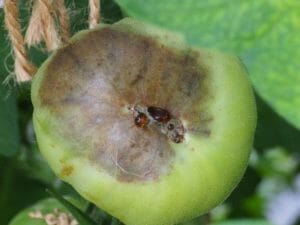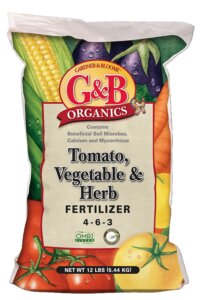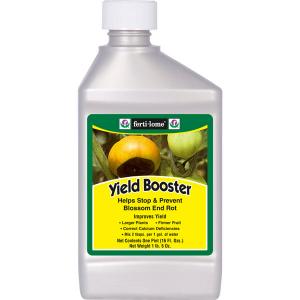
Preventing Blossom-End Rot
Posted by Grange Co-op on 16th May 2018
WHAT IS BLOSSOM-END ROT?
One common, yet avoidable problem gardeners face is blossom-end rot. This water-soaked spot at the blossom end of tomatoes, peppers, squash, cucumber, and melon fruits is not a fungus or a contractible disease, rather it is a symptom of calcium deficiency.
 Blossom-end rot becomes even more prevalent when the growing season starts out wet and then becomes dry when fruit is setting. The fluctuation of moisture reduces the uptake and movement of calcium into the plant. This is extremely common in tomato plants. The damage often can be seen when the fruits are about half their full size. As the fruit matures, the water-soaked area enlarges as well. The tissues on the blossom end of the fruit break down due to lack of calcium. The infected area will turn dark brown, leathery, and ultimately rot the fruit, making it inedible.
Blossom-end rot becomes even more prevalent when the growing season starts out wet and then becomes dry when fruit is setting. The fluctuation of moisture reduces the uptake and movement of calcium into the plant. This is extremely common in tomato plants. The damage often can be seen when the fruits are about half their full size. As the fruit matures, the water-soaked area enlarges as well. The tissues on the blossom end of the fruit break down due to lack of calcium. The infected area will turn dark brown, leathery, and ultimately rot the fruit, making it inedible.
Once you’ve discovered blossom-end rot, it’s too late to treat. Remove the affected fruit and the plant might blossom again and set normal fruit. Nonetheless, the reason for the sunken, rotten spot on the ends of these fruits came long before those symptoms could be seen.
 PREVENTION AND CONTROL OF BLOSSOM-END ROT
PREVENTION AND CONTROL OF BLOSSOM-END ROT
The primary method to avoiding blossom-end rot in your garden is providing enough calcium for the plants. All vegetables need calcium for healthy development. Providing calcium is done during soil preparation or shortly after transplanting. Adding G&B Organics Tomato, Vegetable & Herb Fertilizer (4-6-3) when you first plant your vegetable starts is a successful strategy to avoid blossom-end rot. This product is sold at all Grange Co-op retail stores and is ideal to maintain a balanced soil pH level. G&B Tomato, Vegetable, & Herb Fertilizer includes kelp meal for extra micro-nutrients, feeds for several months, and is OMRI certified organic.
It is also important to maintain consistent levels of moisture in the soil throughout the growing season. Fluctuating watering amounts is a sure way to foster blossom-end rot. When the weather is dry, water thoroughly once to twice a week allowing the soil to receive moisture up to depths of 6 inches. Overall, plants need about 1 inch of moisture per week.
Applying straw or mulch to your garden can help maintain and prolong watering periods. This is an ideal way to keep weeds at bay as well.
Conquer blossom-end rot before it becomes a problem. Always follow instructions on the product label when applying fertilizer. For G&B Tomato, Vegetable, & Herb Fertilizer, recommended application rate is below.


APPLICATION RATE:
New plantings – 1 ½ cups per 10 square feet Established plantings – 1 cup per 10 square feet, every two months Containers – 2 Tbs for every six inch of pot diameter, every two months
BLOSSOM-END ROT EMERGENCY TREATMENT
 There is no way to reverse and heal damaged produce of blossom-end rot. However, if you act fast you can amend your soil quickly enough to save additional produce before it ripens through the rest of the season.
There is no way to reverse and heal damaged produce of blossom-end rot. However, if you act fast you can amend your soil quickly enough to save additional produce before it ripens through the rest of the season.
If your fruits show signs of blossom-end rot, a fast-acting, emergency treatment is Ferti-lome® Yield Booster Concentrate. This liquid concentrate is available at all Grange Co-op retail stores and helps stop blossom-end rot by providing a boost of calcium to save your harvest. Always follow label instructions, apply the diluted mixture directly to base of plant, discard damaged fruit and wait for additional undamaged fruits to ripen.
If you have additional questions about blossom-end rot, contact your local Grange Co-op Gardening Expert for advice and help with all your gardening needs.
